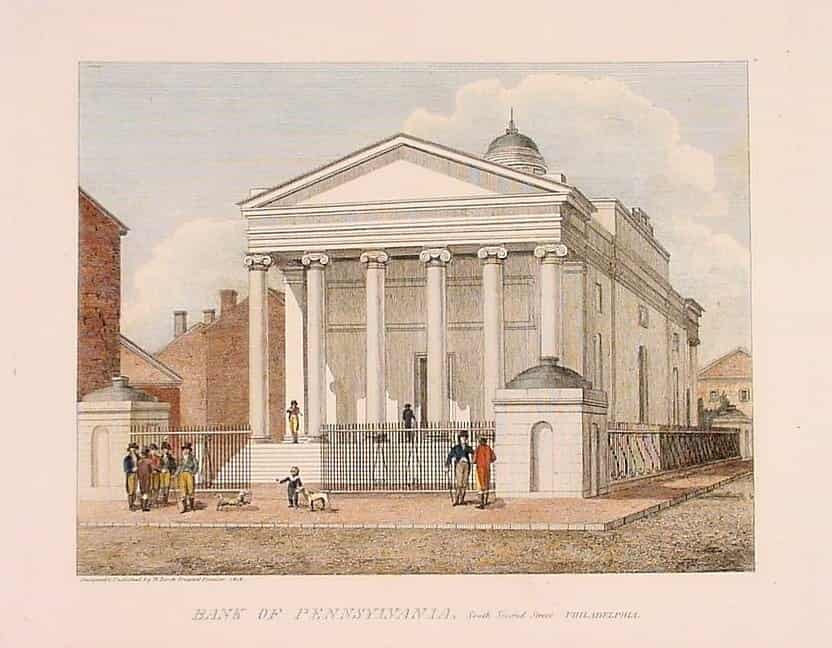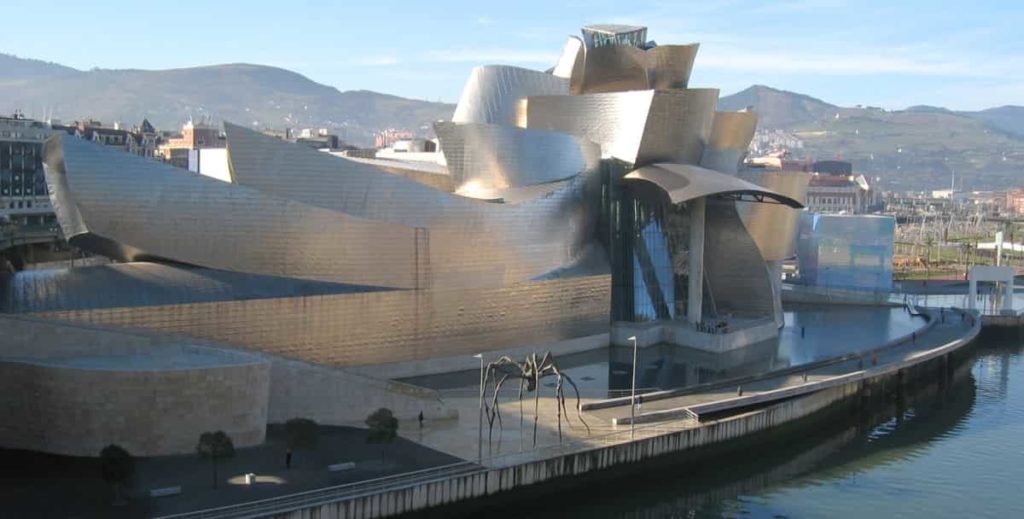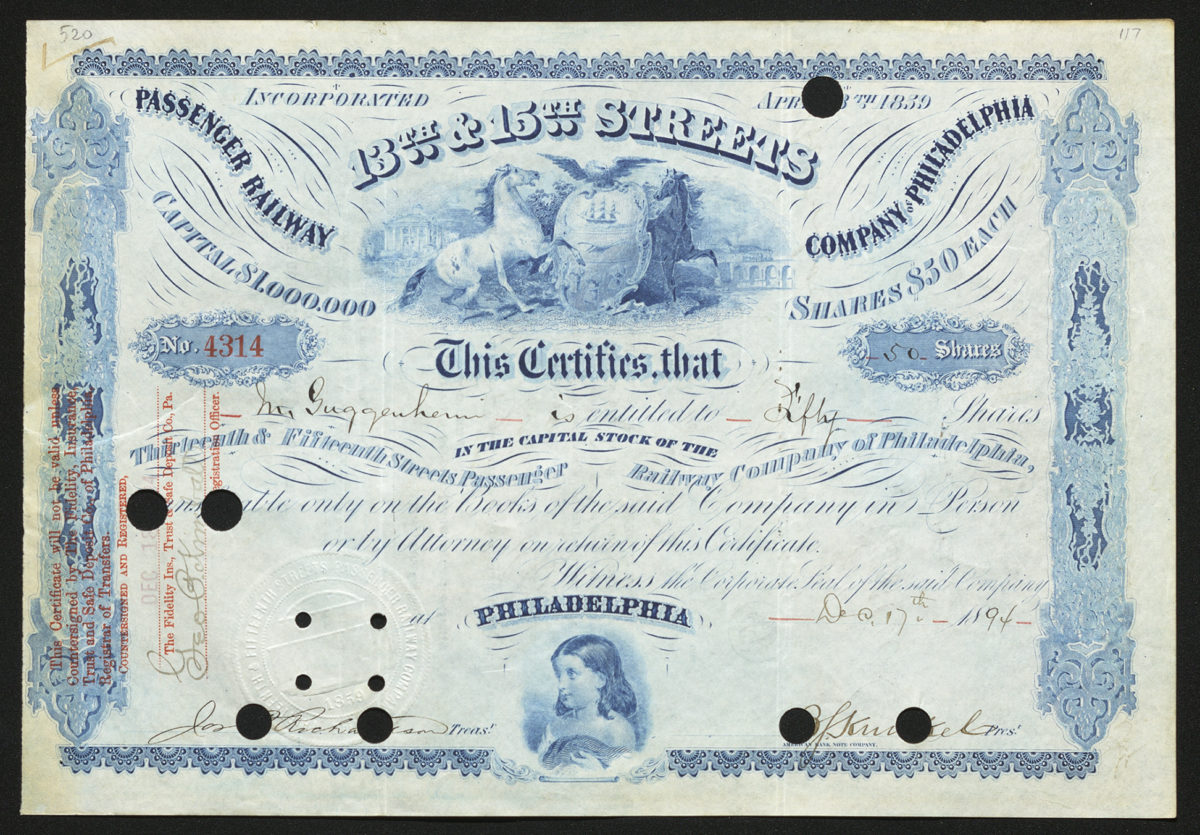
Meyer Guggenheim: Patriarch of a Philanthropic Dynasty
The Guggenheims played a prominent role in the Nevada copper mining industry with Nevada Consolidated Copper Company in Ely, Nevada. The company was considered one of the most lucrative at the time, producing over $6 million in 1906 alone. The Guggenheim name is renowned for its association to funding the advancements of the arts worldwide.
Header Image: The Bank of Pennsylvania, designed by architect Benjamin Latrobe; author 4th Edition of William Birch’s Views of Philadelphia courtesy Wikimedia Commons [1].
“Meyer Guggenheim was an American industrialist and philanthropist who developed worldwide mining interests that, when merged with the American Smelting and Refining Company in 1901, dominated the industry for the next three decades and laid the foundation for the present U.S. mining industry”

The Guggenheim Museum in Bilbao along the Nervion River; courtesy Wikimedia Commons
This certificate is for shares in the Thirteenth & Fifteenth Streets Passenger Railway Company of Philadelphia, from 1894. While this railway is not of particular note, this item is significant because it bears the rare signature of mogul Meyer Guggenheim on both the front and back.
Meyer was an immigrant Jewish entrepreneur who became the patriarch of the prominent Guggenheim family. Meyer built his wealth in copper mining and refining; after escaping oppression as a Jewish man in Europe, he believed that money provided safety. Meyer Guggenheim and his seven sons came to practically monopolize the American copper industry when they took over control of the American Smelting and Refining Company in the late 19th and early 20th centuries.
The Guggenheim sons played a prominent role in mining in the western United States, including Nevada. Their Nevada Consolidated Copper Company in Ely, Nevada produced over $6 million in 1906 and was considered the state’s most productive mining venture. The Guggenheim name is best known today for philanthropy and support of the arts. One of the sons, Solomon, founded the Solomon R. Guggenheim Foundation for the advancement of art in 1937, which has established Guggenheim museums around the world.
The vignette at the top center of this certificate has several features of note. At center, an eagle spreads its wings over a shield bearing images of a sea-faring ship, a plow, and bushels of wheat, symbolizing agriculture and trade. Two steeds, one white and one black, frame this shield; they symbolize the black and white horses from the Chariot Allegory in Plato’s Phaedrus. In the background at the right is a train crossing a stone bridge across the river. At left is an image of the Bank of Pennsylvania, likely symbolizing commerce. Together these images tell a story of Philadelphia as a burgeoning center of trade and economic growth. The Bank of Pennsylvania was designed by architect Benjamin Henry Latrobe in 1798 and is considered to be the first monument designed in the Greek Revival style in America. Latrobe is credited with establishing the profession of architecture in the United States and was one of several architects involved in the completion of the U.S. Capitol building in Washington D.C.
 University of Nevada, Reno
University of Nevada, Reno
